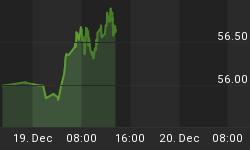Market Summary
For the week, the S&P 500 Index dropped 1.7% while the Blue Chip-heavy Dow Jones Industrial Average's fell 1.6%. The Nasdaq crashed 5.4% last week while the small cap Russell 2000 slumped 4.78% for the week. As evidenced in the chart below, for the year investors are protecting themselves with "risk off" trading as they bidding heavily on safe-haven assets like Treasuries and Gold.

A standard chart that we use to help confirm the overall market trend is the Momentum Factor ETF (MTUM) chart. Momentum Factor ETF is an investment that seeks to track the investment results of an index composed of U.S. large- and mid-capitalization stocks exhibiting relatively higher price momentum. This type of momentum fund is considered a reliable proxy for the general stock market trend. We prefer to use the Heikin-Ashi format to display the Momentum Factor ETF. Heikin-Ashi candlestick charts are designed to filter out volatility in an effort to better capture the true trend. Last week's analysis stated "...the stock market is setting up for a "dead cat" bounce... equities are excessively oversold and displayed a bullish reversal sign at weeks end. As highlighted in the updated chart below, MTUM has converted to a firm downtrend. Also noted is momentum changing to bearish which suggest stock prices should remain suppressed near term.

In the chart below, the Aggregate Bond ETF (AGG) represents the "bond" market and the Equal-Weight S&P 500 ETF (RSP) is the stock market benchmark. As evidenced in the chart below, as investors have been selling off stocks they are depositing the proceeds into the bond market.

As evidenced in the chart below, the dollar posted its biggest two-day drop since March declining to the lowest level since the beginning of November. The greenback fell against all of its 16 major peers except the pound, which was weighed down by the Bank of England's unanimous vote to keep interest rates unchanged. Concerns about an economic slowdown have hurt the dollar by derailing wagers on diverging policies between central banks. Gold finished the week at the highest price point since last October as the dollar crashed and investors became enamored with safe-haven assets like gold. Treasury bonds continued moving higher as disappointing U.S. financial data has sparked sentiment that the Federal Reserve will hold off on further increases to its benchmark interest rate, at least for the time being.

Market Outlook
As we mentioned last week "...investors trading "risk off" since the start of the year, as the only profitable asset classes are bonds and gold..." the updated graph below confirms this observation. Recent earnings and economic reports, including a tepid jobs report, seemed to confirm investors' fear that the economy, and corporate spending, are slowing. The Nasdaq is leading the market's fall ending the week at its lowest level since October 2014. Economically-sensitive stocks are leading the market lower. That's because they're most closely tied to investor confidence (or lack therof) in the U.S. economy.

The CBOE Volatility Index (VIX) is known as the market's "fear gauge" because it tracks the expected volatility priced into short-term S&P 500 Index options. When stocks stumble, the uptick in volatility and the demand for index put options tends to drive up the price of options premiums and sends VIX higher. As reflected in the chart below fear reemerged last week. Investors got nervous and sold off stocks last week which sent the Volatility Index 7.1% higher.

The American Association of Individual Investors (AAII) Sentiment Survey measures the percentage of individual investors who are bullish, bearish, and neutral on the stock market for the next six months; individuals are polled from the ranks of the AAII membership on a weekly basis. The current survey result is for the week ending 02/03/2016. The most recent AAII survey showed 27.50% are Bullish and 34.70% Bearish, while 37.70% of investors polled have a Neutral outlook for the market for the next six months. The current AAII survey supports the current neutral trend with daily up and down price moves.

The Nation Association of Active Investment Managers (NAAIM) Exposure Index represents the average exposure to US Equity markets reported by NAAIM members. The blue bars depict a two-week moving average of the NAAIM managers' responses. As the name indicates, the NAAIM Exposure Index provides insight into the actual adjustments active risk managers have made to client accounts over the past two weeks. The current survey result is for the week ending 02/03/2016. Fourth-quarter NAAIM exposure index averaged 44.61%. Last week the NAAIM exposure index was 42.25%, and the current week's exposure is 22.41%. Money managers dropped the NAAIM exposure index back down to the September low as the market trended downward last week.

Trading Strategy
Last week we said "...the only positive S&P sector so far this year are Utility stocks. The biggest risk to investors is chasing stock prices higher as the market continues a counter-trend bounce, then stocks abruptly sell-off to resume the downtrend catching everyone by surprise - this is known as a "bear trap"..." The bear trap was setup and it captured unsuspecting investors as the market reversed course and ended the week lower. Many stocks that had led on the way up in 2015 are now leading the way down. "There's a lot of portfolio de-risking going on and high valuation securities are often the first to be sold. It's also the securities that have done extremely well," said Tim Ghriskey, chief investment officer of Solaris Group in Bedford Hills, New York. "It's a valuation call and it shows concern for the overall market." In a bear market make sure you keep tight stops in play, especially on the long side.

Feel free to contact me with questions,















